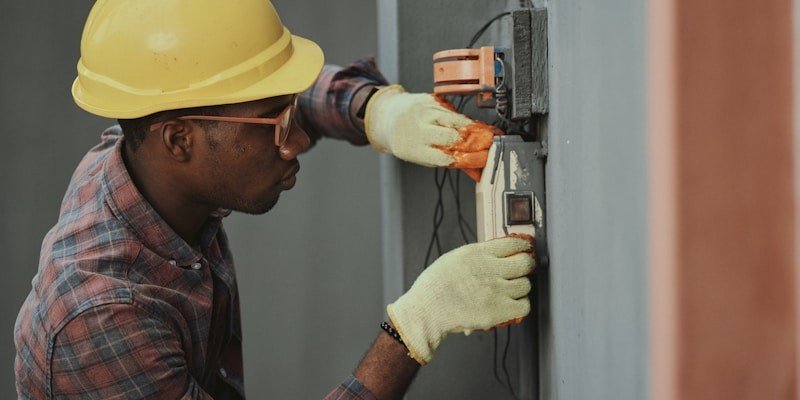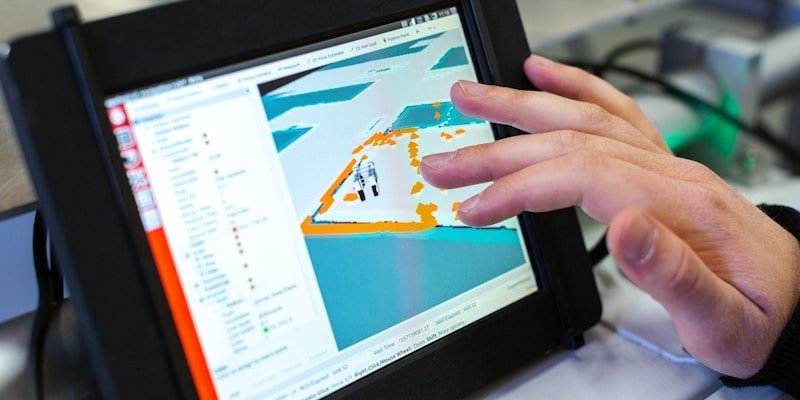Ball Valve Repair: Quick Fixes

This guide helps engineers and maintenance technicians diagnose, fix, and confirm repairs for industrial ball valve leaks. It explains rapid fault isolation, relevant API/EN standards, analysis of failure modes tied to valve design, preventive maintenance practices, and best methods for repairing ball valves.
The guide also works as a reference for plumbing and piping professionals who need to decide between valve replacement and ball valve repair in critical installations.
Table of Contents
- 30-Second Answer: The Quick Fix Protocol
- Leakage Types & Rapid Diagnosis
- Acceptance Criteria: How to Define “Fixed”
- How Valve Design Impacts Leakage & Repair Strategy
- Step-by-Step Repair: External Leaks
- Step-by-Step Repair: In-line Leaks
- Step-by-Step Repair: Body/Flange & End Connections
- Actuator & Torque Diagnostics
- The Root Cause Solution: Material & Seal Selection Upgrades
- Test Workflow & Documentation Template
- Preventive Maintenance & Spare Parts Strategy
- Frequently Asked Questions

Common Issues with Ball Valves
When dealing with an industrial ball valve leak, start by ensuring safety with LOTO (Lockout/Tagout), depressurizing, venting, and draining or purging the line.
After confirming a zero-energy state, identify if the leak is internal (seepage past the seat) or external (seepage from the packing, body, or connections).
This guide also assists in troubleshooting plumbing issues that require a valve replacement or repair in piping systems under pressure.
Repair follows a clear sequence: Fine-tune → Flush → Disassemble/Replace → Upgrade.
For external leaks, begin by evenly tightening the packing gland slightly. For internal leaks, cycle the valve several times under low differential pressure to help clear the seat.
If these steps fail, a complete disassembly to replace soft parts like seats, seals, or packing is required.
After repair, a pressure test in line with API 598 or EN 12266-1 must validate the fix. All results should be recorded to ensure that both repair and any substitution meet industry standards.
Leakage Types & Rapid Diagnosis

Accurate diagnosis is essential as a misdetected leak wastes effort and time. Verify the source and type of leak before performing any repairs. This is especially critical while inspecting connections during ball valve repair or valve replacement in piping.
In-line Leakage (Seat Leakage)
In-line leakage happens when fluid moves from the upstream to the downstream side of a closed valve.
-
Symptoms: A slow buildup of downstream pressure accompanied by a hissing or flowing sound.
-
Possible Reasons:
- • Debris or scaling trapped between the ball and seat.
- • Seat damage from cold flow, wear, or chemical attack (both PTFE soft seats and metal seats with scoring).
- • Differential pressure that exceeds the seat’s capacity, forcing it away from the ball.
- • Thermal changes causing the ball to lose proper contact with the seat.
- • An actuator that fails to push the valve fully closed due to incorrect settings.
External Leakage (Fugitive Emissions)
External leakage allows media to escape from the valve body into the surroundings, posing serious hazards when handling toxic, flammable, or corrosive substances.
Immediate action is required to reduce environmental and safety risks in industrial piping systems.
Stem/Packing Area
This is the most frequent leak location.
- Reasons include aging or hardened packing, reduced gland bolt preload, or a stem that has become scored or pitted from repeated use and thermal cycles.
Body/Joints
Using a two-piece or three-piece valve design exposes vulnerabilities at the valve body.
- Reasons include loose body bolts or aged, improperly specified gaskets that cannot maintain a seal during pressure cycles.
End Connections
Leaks at flanges, welds, or threaded ends indicate connection issues.
- Potential causes are gasket failure, uneven bolt stress, weld cracks or porosity, and inadequate thread sealing.
Acceptance Criteria: How to Define “Fixed”

A successful repair is defined by meeting clear, quantifiable leakage limits according to industry standards. The repair is complete only after standardized tests verify that the valve repair or replacement in piping systems satisfies these criteria.
Core Testing Standards: API 598 & EN 12266-1
These standards are widely used for factory and post-repair valve inspections.
-
Shell Test: With the valve partially open, the entire valve is subjected to hydrostatic pressure 1.5 times its rating. No leaks from the pressure shell (body or bonnet) are allowed.
-
Seat Test: With the valve closed, hydrostatic pressure (1.1× the rating or low-pressure gas tests at 6 bar/87 psi) is applied on one side. Any leakage past the seat is measured.
-
Leakage Rate A: No visible leakage (the strict requirement for gas service and critical applications).
-
Leakage Rate B: Accepts minimal liquid leakage, determined by the valve size (for example, .0006 × DN (mm) drips per minute).
-
Bi-Directional Sealing: For non-directional valves, the seat test is carried out in both directions to ensure a proper seal.
Related Design & Application Standards
-
ASME B16.34, which sets pressure-temperature ratings and wall thicknesses among other requirements.
-
ISO 15848-1, a test standard for fugitive emissions that checks the integrity of the stem packing under mechanical and thermal cycles.
-
API 607 / API 6FA, the fire test standards for valves, ensuring that flammable service valves are designed to be fire-safe.
How Valve Design Impacts Leakage & Repair Strategy

The internal design of a ball valve affects its sealing method and possible failure modes.
These details must be considered during ball valve repair or replacement in a piping system.
Floating vs. Trunnion-Mounted Ball
-
Floating Ball: Here, the upstream pressure pushes the ball against the downstream seat to create a seal. Although simple, the operating torque rises significantly with differential pressure. Floating designs are best for low-to-mid pressure and smaller valves.
-
Trunnion-Mounted Ball: In this design, the ball is supported by fixed pivots and does not move much. The seats are pressured against the ball by springs and line pressure, resulting in lower and consistent torque. Trunnion-mounted valves are ideal for high-pressure and large-bore systems.
SPE vs. DPE Seats
-
SPE (Single Piston Effect): The seat seals only one way and allows for automatic relief if the body cavity becomes over-pressurized.
-
DPE (Double Piston Effect): Designed to seal in both directions, this seat can offer a backup seal if one side fails. However, it may trap pressure in the cavity and lead to overpressure risks if not managed properly.
DBB vs. DIB
-
DBB (Double Block and Bleed): This valve features two independent sealing surfaces with a bleed-off channel between them to confirm the integrity of the upstream seal. DBB is typically achieved with two SPE seats.
-
DIB (Double Isolation and Bleed): Similar to DBB but with each sealing surface rated to block full pressure from either side independently, often using two DPE seats.
Always inspect for an Anti-Blowout Stem, Anti-Static Device, and Locking Device when evaluating valve quality and safety.
Step-by-Step Repair: External Leaks (Stem/Packing)

This repair is the most common and, if not done correctly, can lead to further damage.
Root Cause Analysis
Examine if the packing is loose or overly compressed, if it has deteriorated over time, or if it has been chemically attacked. Also, inspect the stem for scoring or corrosion. These steps determine whether to repair or replace the valve.
Repair Steps
-
1
Online Fine-Tuning: Under pressure and with all safety measures in place, use a torque wrench to tighten the packing gland nuts evenly by 1/8 turn increments. Observe any reduction in leakage while avoiding excessive tightening that could damage the packing or stem.
-
2
Packing Replacement: If fine-tuning does not stop the leak, shut down the system to remove the old packing completely. Clean the stuffing box and inspect the stem for scoring or corrosion. Repair or replace any damaged components, as repeated ball valve repair may not be cost-effective compared to valve replacement.
-
3
Upgrade Paths: Install new packing rings, such as low-emission graphite certified to ISO 15848. New Live Loading packing assemblies use Belleville springs to maintain consistent pressure on the packing, compensating for thermal changes and material creep.
Acceptance is confirmed by re-pressurizing the system and checking around the stem with leak detection fluid (like Snoop) or an ultrasonic detector. Record the final torque values for the packing gland bolts.
Step-by-Step Repair: In-line Leaks (Seat)

Internal leaks typically require removal of the valve from the line to perform thorough work.
Root Cause Analysis
Determine whether debris blockage, seat wear, cold flow, or a scored ball surface is causing the leak or if the actuator limit setting is not accurate.
Repair Steps
-
1
Online Flushing: Under low differential pressure, slowly cycle the valve several times to allow the flowing media to remove debris from the sealing surfaces.
-
2
Disassembly & Cleaning: Remove the valve from service, disassemble it, and extract the ball and seats. Examine all sealing surfaces and thoroughly clean each component of dirt, scale, or chemical deposits.
-
3
Component Replacement: Replace all soft parts, including seats, O-rings, and gaskets. Minor scores on metal surfaces can sometimes be removed by lapping; however, severe damage may require complete replacement of the component or even the full valve.
-
4
Upgrade Paths: If PTFE seats have a history of failure due to cold flow or high temperatures, consider upgrading to RPTFE, PEEK, or metal-seated designs to enhance durability and reliability.
-
5
Recalibration: After reassembling the valve, recalibrate the actuator’s open/closed limit stops for precise 90° rotation.
Acceptance is demonstrated by conducting bi-directional seat tests in accordance with API 598 or EN 12266-1 and recording the resulting leakage rate.
Step-by-Step Repair: Body/Flange & End Connections
Flanged Connections
-
Check that the flange gasket material suits the media, temperature, and pressure of the system.
-
Use a torque wrench to tighten the flange bolts in a criss-cross or star pattern to ensure even pressure distribution.
-
For high-temperature services, consider re-torquing (Hot Bolting) after the first thermal cycle.
-
If leaks continue, replace the gasket and inspect the sealing faces (RF/FF/RTJ) for any damage. Repeated issues here may indicate that replacing the valve is more effective than repeated repair.
Welded Ends
-
Carry out non-destructive examinations (such as Liquid Penetrant or Magnetic Particle tests) on the welds of the affected areas.
-
Based on the test results, perform repairs with a qualified welder or remove and re-weld the faulty joint.
Threaded Ends
-
Remove the connection and clean the threads of any old sealant or tape.
-
Apply a high-quality thread sealant or properly wrap PTFE tape before reconnecting to ensure a secure seal.
Actuator & Torque Diagnostics: The Problem May Not Be the Valve

A valve that does not close completely may indicate an issue with the actuator rather than the valve itself.
Torque Calculation Review
The closing torque must overcome the force from differential pressure and friction between the ball and seat. The actuator’s specified output torque should include a safety factor of 1.3 to 1.5. Confirm the actuator is properly sized, which is essential whether performing routine repairs or opting for a full valve replacement.
Actuator Faults
-
Pneumatic systems may suffer from insufficient air supply pressure, solenoid or cylinder issues, or miscalibrated positioners.
-
Electric systems can be affected by unstable power, incorrect limit or torque settings, or damaged internal gearing.
Mechanical Coupling Issues
Examine the joint between the valve and the actuator, ensuring that the mounting bracket and coupling satisfy ISO 5211 standards. Check for misalignment, a loose key, or excessive backlash that could reduce effective torque.
The Root Cause Solution: Material & Seal Selection Upgrades
Persistent leaks clearly indicate that the valve’s materials may be unsuited to its operating conditions.
When renewals become frequent, it may be better to replace the valve entirely rather than attempting further repairs.
The table below shows common components, their standard materials, and potential upgrade options:
| Component | Standard Material | Upgrade Options & Considerations |
|---|---|---|
| Body/Ball/Stem | A216 WCB (Carbon Steel), A351 CF8M (316 SS) | Low Temp: LCC/LCB • Corrosive: Duplex/Super Duplex SS • Sour Service: Materials meeting NACE MR0175/ISO 15156 |
| Seat (Soft) | PTFE | Anti-Cold Flow/Higher Temp: RPTFE, PEEK • Cryogenic: PCTFE • High Temp/Abrasive: Upgrade to Metal-Seated |
| Seat (Metal) | Base Metal with Hardfacing | Wear/Galling Resistance: Electroless Nickel Plating, HVOF spray coatings with Tungsten Carbide or Chrome Carbide |
| Packing | PTFE | High Temp/Fire-Safe/Low Emission: Flexible Graphite certified to ISO 15848 |
Test Workflow & Documentation Template
A reliable repair process requires complete documentation of repairs, tests, and replacements.
Test Matrix
-
Shell Strength Test: Apply 1.5× rating at ambient temperature using water.
-
Upstream Seat Test: Apply 1.1× rating at ambient temperature using water.
-
Downstream Seat Test: Apply 1.1× rating at ambient temperature using water.
-
Low-Pressure Gas Seat Test: Apply 6 bar (87 psi) with air or nitrogen to detect small leaks.
-
Functional Cycle Test: Cycle the valve fully open and closed multiple times while monitoring torque and limit accuracy.
Required Document Package
-
Repair Report detailing all components replaced
-
Pressure Test Certificate specifying media, pressure, duration, and leakage rate
-
Final Torque Sheet for flange bolts and packing gland
-
Material Test Reports (for example, EN 10204 3.1 certifications) for new parts
-
Updated Valve History Record
Preventive Maintenance (PM) & Spare Parts Strategy

-
Establish maintenance cycles based on the media quality, corrosivity, temperature, and frequency of operation. For valves in dirty conditions, scheduling cycles quarterly or semi-annually may prevent seizing.
-
Prepare spare parts kits for each critical valve model, including core wearing parts that are likely to be needed for timely valve replacement.
-
Key parts include seats, body seals, and packing.
-
Other recommended components are bearings or bushings, Belleville springs, and anti-static devices (spring and ball).
Conclusion: From Plugging Leaks to Curing the Cause
Fixing a leaking ball valve goes beyond simply tightening a fastener.
The repair process is a step-by-step procedure that begins with proper safety isolation and precise diagnosis, moves to a repair that follows industry standards and technical guidelines, and concludes with a verification test supported by recorded data.
Repeated leaks indicate that system-wide issues may be present, whether in the actuator sizing, material compatibility, or service conditions that exceed the valve’s design limits. Investigate the root cause thoroughly to ensure long-term reliability, and always consider whether a complete valve replacement might provide a stronger solution for challenging service conditions.
Frequently Asked Questions (FAQ)
Q1: My stem is leaking again. Can I just tighten the packing gland more?
A: A slight adjustment is possible if done carefully with a torque wrench to apply even force. However, over-tightening risks crushing the packing or scoring the stem, which may cause the valve to seize. If the minor adjustment does not work, it is best to replace the packing.
Q2: What’s the difference between API 598 Rate A and “a few bubbles per minute”?
A: Rate A means zero visible leakage. Even a few bubbles during a water submersion test indicate that the valve does not meet the Rate A requirement, making it unacceptable for critical gas services.
Q3: How often should I test a critical ball valve?
A: The testing interval depends on the valve’s role in the system. For an Emergency Shutdown (ESD) valve in a Safety Instrumented System (SIS), regulations may require tests quarterly or annually using partial stroke tests. For general isolation valves, a full inspection during a planned turnaround (typically every 1-5 years) is common.
Q4: My ball valve is stuck and won’t operate, but it’s not leaking. What should I do?
A: Do not force the valve with excessive leverage, as this may damage the gearbox or stem. First, check if the actuator is receiving proper air or power. Operating the valve at a reduced line pressure may help. If the valve remains stuck, media buildup, corrosion, or inactivity may have caused the ball to seize against the seats. The valve will likely need a shutdown and disassembly to be repaired, and replacing the valve may be more efficient if the issues persist.
Get Expert Assistance
Need help with your ball valve repair or have questions about valve maintenance? Our technical team is here to assist you.
